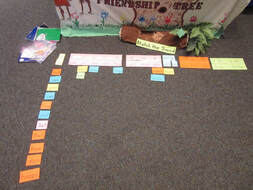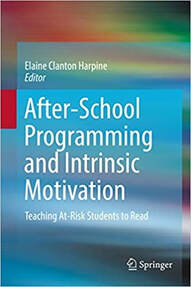
In the Classroom, We Are Still Using the Same Old, Failed Teaching Methods. Nothing Has Changed
The only real, positive change that I can point to in 2021 so far is that we have a new President being inaugurated into office this week. Positive changes lie ahead for our country and hopefully for education as well. In the meantime, I want us to think about the type of education children are returning to in the classroom.
Were we successful with how we were teaching students before the coronavirus pandemic? No, we were not.
The Nation’s Report Card in 2019 shows that the methods we were using for teaching reading in the classroom were failing. Please note that all of these test scores were recorded before Covid-19.
for 4th grade only --“… 35 percent performed at or above NAEP Proficient….”
for 8th grade only – “… 34 percent performed at or above NAEP Proficient….”
for 12th grade only – “…37 percent performed at or above NAEP Proficient….”
So, what does proficient mean? Proficient means that students who read at the proficient level are able to read at or above their grade level.
What About Students Who Are Not Able To Read At The Proficient Level?
Students unable to read at the proficient level at 4th, 8th, or even 12th grade are struggling students, sometimes labeled as “low achieving students.” They are reading below grade level, often struggling to learn to read. Some are failing. Some are reading, but far below their age level. Whose fault is this?
People often blame teachers. However, teachers are not causing reading failure. Yes, there are good and bad teachers just as there are good and bad doctors, but teachers are not the real problem. Other people blame parents. Again, there are good and bad parents, but parents, poverty, or even a low socioeconomic background does not cause reading failure. Several research studies prove this to be true. [see Chapter 1 in my book--After-School Programming and Intrinsic Motivation: Teaching At-Risk Students to Read]

The cause of reading failure is the teaching methods that we use in the classroom for teaching reading.
From the Nation’s Report Card scores, we can see that neither whole language teaching methods nor a phonics teaching approach has proven to be successful in teaching children how to read. Students are failing. Whole language and phonics have both failed.
So, what are we to do? Are we just to go on continuing to use failing teaching methods or should we change to something that works?
President-elect Biden says that as a nation we will be focusing on scientific facts this year; therefore, perhaps in reading, we should focus on science as well. I want to highlight three new studies released in 2020.
New Research in 2020
First, Edutopia lists a new study as one of the 10 Most Significant Education Studies of 2020. Marilyn Jager Adams and her research team stated that systematic phonics is more effective than whole language and balanced literacy. Indeed, stacks and stacks of research (dating back to the year 2000 and even before) show that systematic phonics is better than whole language. Yet, if you walk into any classroom, you will still encounter whole language and balanced literacy because those discredited methods are taught each and every day in public school classrooms.
But, wait, is systematic phonics the change we actually want to make?
Another significant research study of 2020 challenges us to reconsider systematic phonics. Jeffrey S. Bowers, Professor of Psychological Science at the University of Bristol, conducts neuroscientific research on how word knowledge is coded in the brain and has reviewed the research claiming that systematic phonics is effective. Bowers found the claims being made about systematic phonics do not match the research results. I encourage you to read his article.
Professor Bowers explains that systematic phonics does not work any better than other methods that have been used in the classroom; therefore, switching to systematic phonics would be disastrous. Students would continue to fail.
“One problem is that the majority of older students (78%) in the various studies included in the NRP [National Reading Panel] analysis were either low achieving readers or students with reading disability, and as noted above, systematic phonics was less effective with both these populations….” Bowers, 2020, p. 687)
Bowers concludes by saying that switching to systematic phonics would be a major mistake. Systematic phonics simply does not work for the students who need it most.
If we go back and look at the Nation’s Report Card test scores, we see that over half of the students tested were found to be “low achieving” or students unable to read at their grade level. These are the very students who need a teaching method that actually works. Bowers is also not the only researcher saying that systematic phonics does not work with struggling students.
Even systematic phonics enthusiasts admit that systematic phonics does not work well with struggling students.
- Jeanne Sternlicht Chall (1967) an advocate for systematic phonics, warned that a purely phonics approach would leave many students failing.
- Linnea C. Ehri, (2001) another strong advocate for phonics, also found that systematic phonics “… did not help low achieving readers.”
- Even the National Reading Panel (2000) states that, “… phonics instruction failed to exert a significant impact on the reading performance of low-achieving readers in 2nd through 6th grades….” (p. 94).
If even the people who support phonics admit that it doesn’t work for the students who need the most help, why are we using it? Are we causing more reading failure through the use of systematic phonics? Obviously, we are.
Click here for a complete description of my research on systematic phonics
Does Phonics Work for Students Diagnosed with Dyslexia?
Those working with students diagnosed with dyslexia also contend that systematic phonics does not work for students who need help in reading. Gerald Hughes, Director of the Neuro-Linguistic Learning Center and author of the book, Gifted—Not Broken: Overcoming Dyslexia, ADD and Other Learning Challenges, states that long-standing research shows that:
“20% of all children will show little or no lasting improvement in reading ability using phonics-based programs…. using a phonics-based program on this particular group of children, is more than likely doomed to failure because it is focused on the very weaknesses of the child. Experience has repeatedly shown that when subjected to an extensive phonics-based program, many of these children will experience frustration, anger and ultimately continued failure.”
Phonics simply does not work for many students, especially the students who so desperately need help. So, why do we keep demanding that schools switch to systematic phonics? If it doesn’t work and has been proven not to work with struggling students, why do we keep using systematic phonics? Schools must change. Schools must change and adopt a teaching method that works for all students.
We cannot afford to give in to whole language advocates or systematic phonics advocates; instead, we must look for a new alternative, a new way to teach all students to read. The teaching method and curriculum that we use in the classroom is the key.
Dr. Mark S Seidenberg, a cognitive neuroscientist for the Department of Psychology at the University of Wisconsin-Madison and author of Language at the Speed of Sight: How We Read, Why so Many Can’t, and What Can Be Done About It (2017), said:
“How reading is taught is indeed a significant part of the literacy problem in the US and other countries…. In the US, the conflicting and often strongly entrenched interests of various stakeholders—educators, politicians, scientists, taxpayers, labor organizations, parent groups—make it hard to achieve meaningful change within the existing institutional structure of public education.” (p. 10)
So, yes, how we teach makes a difference in whether students succeed or fail. We need a teaching method that works.
We do have research-based, tested methods that actually help students of all ages learn how to read. We just need to change how we teach and use more effective teaching methods. Phonics and whole language are not the answer. It’s not the students who are failing; it’s the teaching methods that are failing the students.
I use vowel clustering, and I have actually had failing students move up four grade levels in reading in one year. So, yes, we can in fact teach failing students to read. The research data may be found in my latest book--After-School Programming and Intrinsic Motivation: Teaching At-Risk Students to Read.
This brings us to a third new research study in 2020, Thomas B. Fordham’s associate director of research Adam Tyner and early childhood researcher Sarah Kabourek concluded that,
“Increased instructional time in social studies—but not in ELA [English and Language Arts]—is associated with improved reading ability.”
The verdict is still out on this new idea, but you must admit that it is an interesting concept. What if an increased focus on civics, social studies, and world cultures actually helped increase reading scores?
Teaching social studies cannot take the place of teaching students to decoded and encode letter sounds, but it might help increase comprehension. We will discuss comprehension later in another blog post. For now, our primary concern is teaching struggling students to read—to decode and encode letter sounds. Systematic phonics is obviously not the teaching method that we need.
I wonder what changes will come to education in 2021
Will we finally stop fighting over whole language and phonics and begin to actually teach students to read?
Will we incorporate more social studies into our reading programs?
We must conclude that whole language and balanced literacy do not work. Even systematic phonics does not work for all students, especially the students who need it most.
In my next blog post, we will look at the difference between phonics and phonemic awareness, and ask, could phonemic awareness solve the reading failure that phonics could not?
 RSS Feed
RSS Feed
